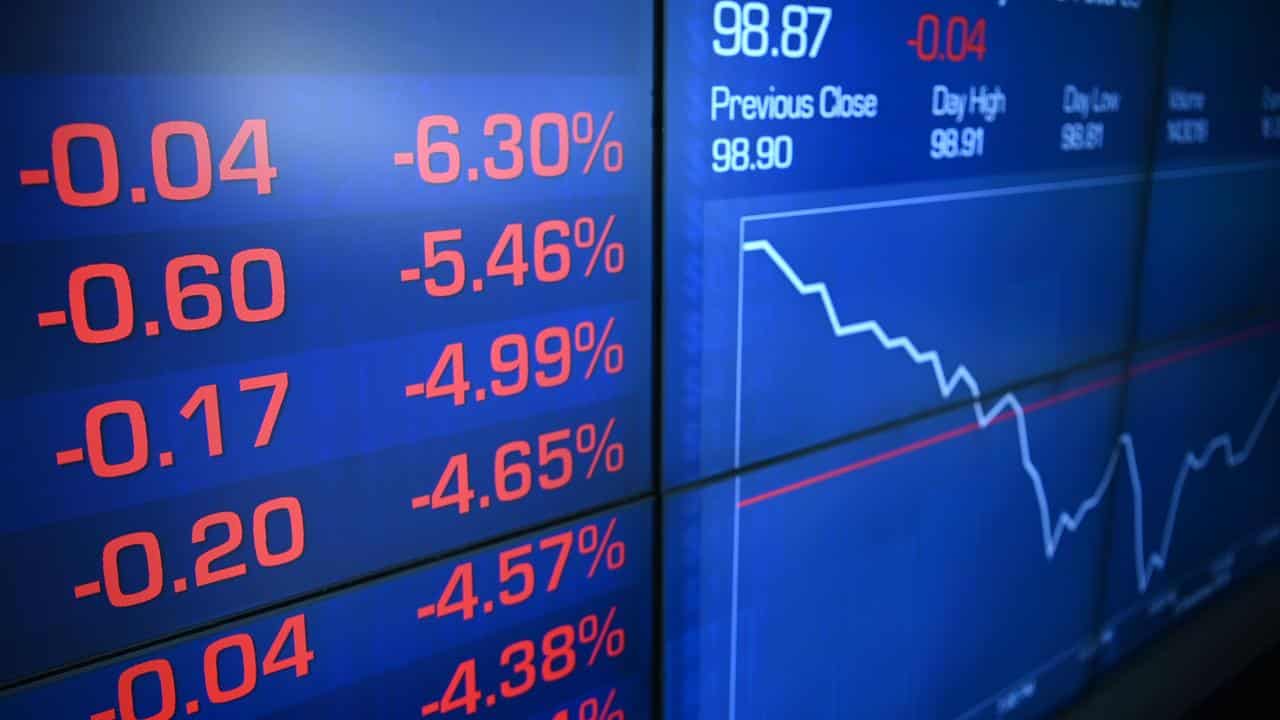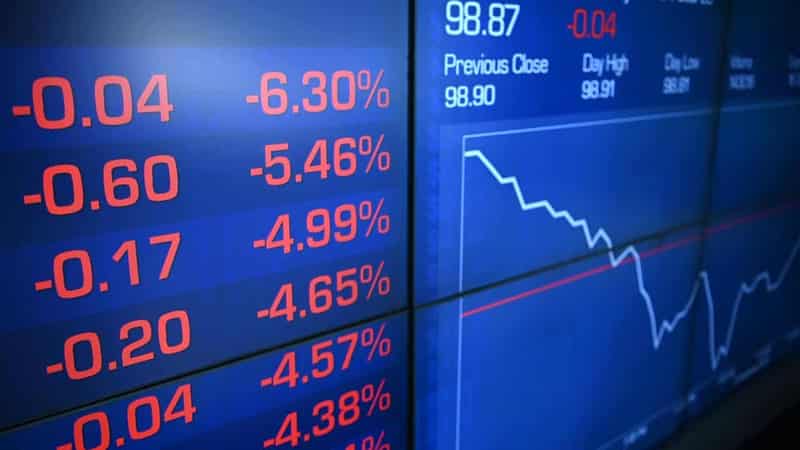
The Australian share market has suffered its worst week in three months, falling for a third straight session after global equities sank.
The benchmark S&P/ASX200 index finished Friday down 41.2 points, or 0.5 per cent, at 8,118.8 for its lowest close in seven weeks.
For the week, the index was 1.13 per cent lower. The bourse has not fallen by as much in the space of a week since August.
The broader All Ordinaries fell 42.4 points, or 0.5 per cent, to 8,379.7.
Friday's fall followed declines on Wall Street overnight, with the Dow Jones down 0.9 per cent, the S&P500 slipping 1.9 per cent and the tech-heavy Nasdaq tanking 2.8 per cent.
Tech stocks drove US markets lower after disappointing earnings outlooks from Microsoft and Meta, said Westpac senior economist Pat Bustamante.
"There was a sea of red across major global equity markets," he said.
"European stocks were also lower as the disappointing US tech earnings hit global risk sentiment.
"The stronger than expected euro area inflation read, along with the UK budget, which is being characterised as expansionary, dashed hopes of front-loaded rate cuts, also weighing on equities."
Locally, slightly higher than hoped-for inflation dashed expectations of a pre-Christmas rate cut, AMP chief economist Shane Oliver said.
"Over the next 6-12 months we continue to see shares heading higher as central bank rate cuts bolster economic growth, but gains are likely to be more constrained and the risk of another correction is high," he said.
Financial stocks were among the worst performers on Friday, down 0.9 per cent, after a disappointing earnings result from Macquarie Group.
The financial services conglomerate sank 3.6 per cent after its profit for the six months ended September 30 came in at $1.6 billion, up 14 per cent from the prior corresponding period but seven per cent lower than analyst expectations.
Increased income from its asset management and banking arms were offset by weaker performance in commodities and markets.
Despite growth in its home loan portfolio, its banking and financial services margin was squeezed by ongoing competition for lending and deposits.
The banks were also in the red, with NAB down 1.5 per cent, CBA falling 0.5 per cent, ANZ 0.3 per cent lower and Westpac dropping 0.1 per cent.
The big four, except CBA, will reveal their full-year financial results next week.
Of the 11 ASX sectors, only miners and energy stocks were in the black, with oil prices rising for the second consecutive day amid ongoing tensions in the Middle East.
Australia's biggest oil and gas producer Woodside was 1.1 per cent higher, while Santos rose 0.7 per cent.
Despite a fall in the iron ore price, miners recovered amid signs China's economy is coming back to life, with manufacturing output returning to expansion after five straight months of contraction.
BHP firmed 0.3 per cent while Rio Tinto and Fortescue both climbed 1.7 per cent.
Next week will be a consequential one for markets, with the outcome of the US election playing on traders' minds as well as central banks in Australia, the US and the UK meeting to set interest rates.
With Donald Trump leading Kamala Harris in the polls, markets have already begun factoring in his policies, as reflected in the rise in the US dollar, Bitcoin and bond yields, Dr Oliver said.
The Australian dollar was buying 65.75 US cents, from 65.68 US cents at Thursday's ASX close.
ON THE ASX:
* The benchmark S&P/ASX200 index finished Friday down 41.2 points, or 0.5 per cent, at 8,118.8.
* The broader All Ordinaries fell fell 42.4 points, or 0.5 per cent, to 8,379.7.
CURRENCY SNAPSHOT:
One Australian dollar buys:
* 65.75 US cents, from 65.68 US cents at Friday’s ASX close
* 100.27 Japanese yen, from 100.44 Japanese yen
* 60.45 Euro cents, from 60.55 Euro cents
* 50.99 British pence, from 50.72 pence
* 109.93 NZ cents, from 109.96 NZ cents.









